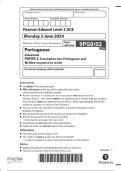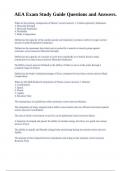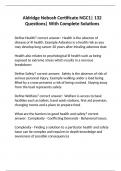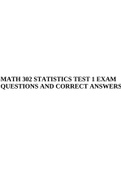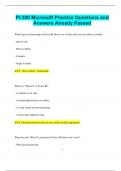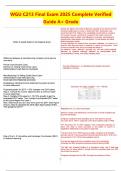ECON0038 MONEY & BANKING
Table of Contents
About the exam............................................................................................................................................................. 3
Topic 1: Role of money & credit ....................................................................................................................................... 5
1.1 Role of money, credit, financial intermediaries ...................................................................................................... 5
1.2 Impact of credit/financial system on economic growth: empirical results ............................................................ 6
1.3 Impact of credit/financial system on economic growth: consumption & investment ........................................... 7
A) Availability of credit potentially leads to economic growth ................................................................................. 7
B) Availability of credit potentially not lead to economic growth ............................................................................ 8
1.4 Impact of credit/financial system on economic growth: transmission of monetary policy ................................... 9
1.5 Importance of types of financial system ............................................................................................................... 11
1.6 Money & Cryptocurrency ...................................................................................................................................... 13
Topic 2: How do banks compete ..................................................................................................................................... 16
2.1 Why do banks exist ............................................................................................................................................... 16
A) Transaction costs ................................................................................................................................................ 16
B) Asymmetric information ..................................................................................................................................... 17
2.2 What do banks do and how it changed over time ................................................................................................ 19
2.3 How do banks compete: price competition (lending rate decision) ..................................................................... 21
2.4 How do banks compete: risk management .......................................................................................................... 23
A) Type of risks ........................................................................................................................................................ 23
B) Risk management tool: Asset & liability management....................................................................................... 24
C) Risk management tool: Off balance sheet activities .......................................................................................... 24
2.5 How do banks compete: non-price competition .................................................................................................. 26
A) Product differentiation ....................................................................................................................................... 26
B) Innovation ........................................................................................................................................................... 28
C) Corporate restructuring ...................................................................................................................................... 29
D) Consumer inertia/consumer behaviour: affect switch and searching ............................................................... 30
Topic 3: How and why of regulation ............................................................................................................................... 31
3.1 Why regulate bank? .............................................................................................................................................. 31
A) Imperfect competition in banking? .................................................................................................................... 31
B) Market failure in banking? .................................................................................................................................. 31
3.2 Objectives of banking regulation .......................................................................................................................... 33
3.3 Who regulate banks .............................................................................................................................................. 34
3.4 How to regulate banks .......................................................................................................................................... 36
A) Safety net ............................................................................................................................................................ 36
B) Structural regulation ........................................................................................................................................... 37
C) Behavioural regulation: microprudential ........................................................................................................... 38
, D) Behavioural regulation: macroprudential .......................................................................................................... 39
E) Managing failing banks ....................................................................................................................................... 43
3.5 Limitations of bank regulations ............................................................................................................................ 45
Topic 4: Post GFC debates............................................................................................................................................... 46
4.1 Lessons from GFC .................................................................................................................................................. 46
A) What is financial crisis ........................................................................................................................................ 46
B) GFC: factors of the crisis ..................................................................................................................................... 46
C) GFC: how did government/regulators react ....................................................................................................... 49
D) GFC: lessons ........................................................................................................................................................ 49
4.2 Regultion of corporate governance & banker bonuses ........................................................................................ 50
A) Corporate governance & culture ........................................................................................................................ 50
B) Regulation remuneration & bonuses ................................................................................................................. 51
4.3 Basel III capital requirements ............................................................................................................................... 53
A) Basel I and II ........................................................................................................................................................ 53
B) Basel III ................................................................................................................................................................ 55
C) Should Basel III Capital requirements be higher? ............................................................................................... 57
4.4 Seperation of universal banks ............................................................................................................................... 60
A) Universal banking ............................................................................................................................................... 60
B) Vertical separation: ring-fencing ........................................................................................................................ 61
C) Vertical separation: full ownership separation .................................................................................................. 63
D) Vertical separation: narrow banking .................................................................................................................. 64
E) Is structural regulation sufficient for financial stability? .................................................................................... 65
,About the exam
▪ 1.5 hour
▪ Part A: Choose 3 out of 5 (45% total)
o 35-40 mins, each answer around 1 part
o Direct answers, understanding of economics, understanding of topics & materials from the course, facts +
clear explanation
o Materials: topic quizzes, questions in lectures, 2016/17 papers
o Marking rubric
Relevant (answer the question that has been asked), accurate (use the right arguments), complete
(not miss key analysis), show independent thinking (comments)
▪ Part B: Choose 1 out of 2 (55%)
o 40-45 mins, around 2-3 pages
o Look at depth of knowledge, similar to homework questions
o Can write main body first, then go back to introduction & conclusion
o Support by economic evidence (economic models, economic diagrams, algebra/equations, economic
language narrative, literature references, real world examples, empirical evidence), 3-4 arguments, Tell the
reader why you choose that particular evidence
o If use graphical/algebra evidence: define and explain what are the variables/axes, USE the graph and
equations in your arguments and not just state them
o How to reference (name of author & year), write a couple references for each argument, won’t really get
sub-bullets in questions, won’t ask questions on a specific reading (but will be on specific model, topic)
o Don’t give too general discussion about the topic, give precise and focused answers
o Part C in 2016 2017, Part B in 2015, Part B in 2014
,o Marking rubric:
,Topic 1: Role of money & credit
1.1 Role of money, credit, financial intermediaries
▪ Development of economies
1. Economy with exchange/barter only (require double coincidence of wants)
2. Economy with money (cash in hand) but no time dimension or intermediaries
3. Economy with credit (money with time dimension or intermediaries)
▪ Role of money:
o Allows for trade & exchange that would not happen in the absence of double coincidence of wants
o Welfare maximization: better allocation of resources to those that value the most
o Efficiency gains: facilitates specialisation & efficiency gains
▪ Role of credit:
o Money is not always available when you need it for
➢ consumption (individuals max utility over time subject to lifetime budget constraint) or
➢ investment (firms maximize profits or min costs over time)
o Time dimension of economic decisions
o Increase number of parties that can contract with increases likelihood of couble coincidence
o Requires double coincidence of wants over time dimension & trust
o Credit can only be provided if lenders have sufficient money to lend today & believe that borrowers
will repay over time
▪ Direct vs indirect financing
o Direct financing: buy/sell a bond, buy/sell shares
➢ Limitations:
Households and small business lack experience to issue and share bonds
High transaction costs
Need knowledge/expertise to assess potential returns
o Indirect financing: borrow & deposit in bank
▪ Role of financial intermediaries (retail bank): enforce contracts between borrowers & savers (lenders) if
don’t have or can’t identify double coincidence of wants or don’t have trust
,1.2 Impact of credit/financial system on economic growth: empirical results
▪ Financial development leads to economic growth
a) (Aghion 2010) Financial systems remove liquidity constraints, facilitate long-term investment, reduce
volatility of investment and spur growth
b) (King & Levine 1993) Studied empirical relationship, found that financial development improves
economic growth. Financial services stimulate economic growth by increasing rate of capital
accumulation & improving efficiency which capital is used.
▪ Financial development may not lead to economic growth
a) (Cecchetti and Kharroubi 2012) Tipping point: There is a point where further increase in scale of
financial system can reduce growth (tipping point around 100% Private credit-to-GDP ratio). Found that
size of financial system has an inverted U-shape effect on economic growth. Larger financial industry
compete for scarce resources with rest of economy. Requires physical & human capital. Found that
faster financial sector growth damage economic growth.
b) Blanchard & Labonne (2011) No positive relationship between financial deepening/scale of financial
sector (measured by number of employees in financial sector) and economic growth. Proportion of
employees working in finance is direct measure of potential misallocation of talents detriment to other
industries.
,1.3 Impact of credit/financial system on economic growth: consumption & investment
A) Availability of credit potentially leads to economic growth
▪ How provision of credit impact on economic growth?
Credit allows for more efficient consumption and production decisions → allows for better resource
allocation & potential economic growth
Matthew & Thompson (2014): Intertemporal optimisation model
▪ Model assumptions
o 2 periods
o Capital market is perfect
o No distortionary taxes
o No asymmetric information
o Complete contract
o Investment opportunities are indefinitely divisible
o Investment is subject to diminishing returns
o Return on capital market investment opportunities > return on investment in physical capital
▪ Model framework
o Agents choose c1, c2 to max utility subject to 2-period budget constraint
o Have income endowment Y1, Y2
o Two budget constraints
i. No capital markets (physical investment opportunities line (PIL))
Invest in period 1 and spend return in period 2
Can’t borrow period 2 for period 1 consumption (at t=1 at most can consume endowment Y1)
ii. With capital markets (Financial investment opportunities line (FIL))
Invest in period 1 and spend return in period 2
Can borrow period 2 for period 1 consumption
At t=1: can borrow Y2/(1+r) and repay Y2
At t=2: can consume (1+r)Y1 by saving Y1
▪ Model results
, o Provision of credit can improve efficiency of decision making, welfare (High utility function Ucm than
Uncm) and resource allocation (wider consumption choices → wider budget set)
o More efficient allocation of capital → can lead to more and better investment → economic growth
B) Availability of credit potentially not lead to economic growth
1. If credit used to invest in non-productive activities → does not increase output
2. If credit used to smooth consumption over time, does not always free up resources for investment
3. Leverage only leads to real growth if results in better allocation of resources
4. Turner (2010)
▪ Credit used to leverage purchase of existing assets (eg. Commercial real estate) merely changes
ownership of existing asset, does not generate new asset
▪ Credit can drive asset price cycles and credit supply in a self-inforcing way, potentially destabalising
▪ Credit (74% of household credit) used for life-cycle consumption smoothing which delivers welfare
benefits, but not productive investment.

